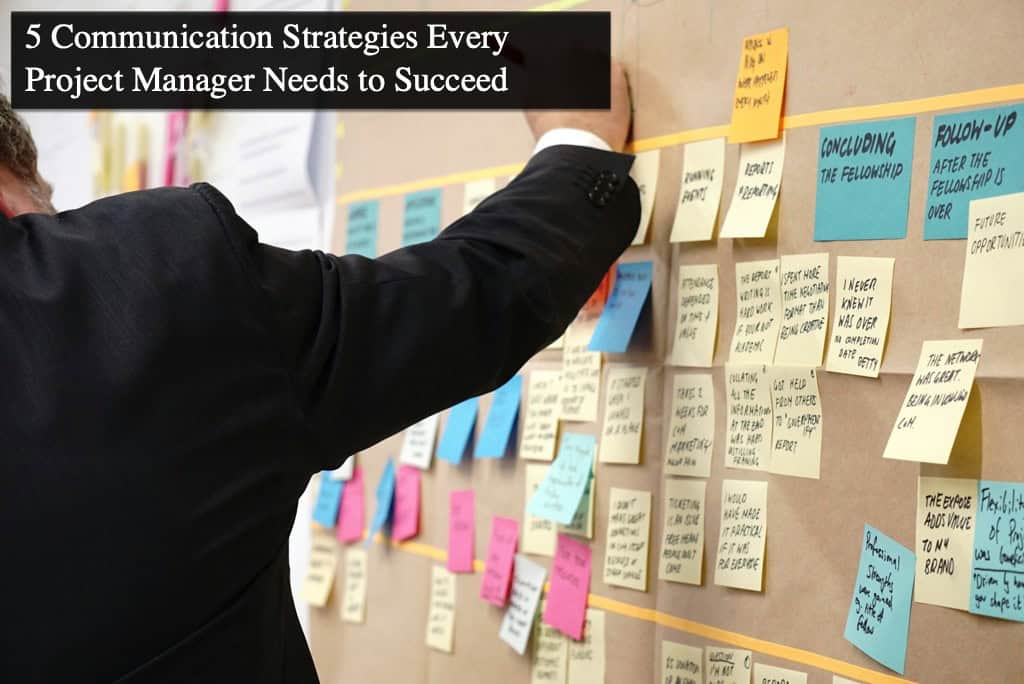
Strong communication is the backbone of any successful project. As a project manager, your ability to effectively share information, motivate your team, and align everyone toward a common goal can make or break your efforts. It’s not just about passing along updates – it’s about fostering clarity, collaboration, and trust.
By mastering specific communication strategies, you can tackle challenges head-on while keeping your team engaged and focused. From active listening to providing timely updates, these tools empower you to navigate complex projects with confidence and ease.
Let’s explore five key strategies every project manager needs to elevate their leadership game and drive better results.
5 Communication Strategies Every Project Manager Needs to Succeed
1. Active Listening Matters
Active listening is one of the most underrated yet powerful tools in project management. It’s not just about hearing what someone says, but truly understanding their message and intent.
When you practice active listening, you give your team members the space to express themselves openly, which fosters trust and collaboration. This skill allows you to catch details that might be overlooked, ensuring smoother workflows and avoiding issues down the line.
Effective active listening involves maintaining eye contact, asking clarifying questions, and paraphrasing to confirm understanding. Mastering this isn’t optional – it’s one of those essential business communication skills that can make or break your leadership impact. A great listener drives clarity, alignment, and stronger teamwork overall.
2. Be Clear and Concise
Clarity is key when communicating with your team or stakeholders. As a project manager, you’re responsible for ensuring that everyone understands the goals, tasks, and timelines without confusion. Avoid using unnecessary jargon or overloading your messages with too much detail.
Instead, focus on keeping your communication straightforward and easy to follow. This applies to emails, meetings, and even casual check-ins. When you’re concise, it not only saves time but also reduces the chances of misunderstanding.
Make sure to communicate what’s most important first and provide additional information as needed. Clear instructions help create smoother workflows and keep everyone aligned, so no one has to second-guess what’s expected of them at any stage of the project.
3. Adapt Your Style to Your Audience
Not everyone on your team or among stakeholders processes information the same way. What resonates with one person might confuse another, which is why flexibility in communication is critical. Take into account the preferences and roles of your audience.
For example, a stakeholder may expect high-level summaries focused on results, while your team members likely need more detailed instructions and actionable steps. Adjusting your tone, level of detail, and delivery method can make your message land more effectively.
Whether it’s being formal in written reports or casual during brainstorming sessions, tailoring how you communicate builds stronger connections. Doing so ensures that each individual feels understood and respected while also keeping everyone moving in the right direction together.
4. Provide Regular Updates
Keeping your team and stakeholders informed is crucial for maintaining trust and alignment throughout a project. Regular updates ensure everyone knows where things stand, what’s been accomplished, and what challenges might be ahead. Whether it’s through meetings, status reports, or quick check-ins, consistency in communication minimizes surprises.
It also helps identify potential issues early enough to find solutions before they grow into larger problems. Make sure your updates are clear and focus on progress toward key milestones without overwhelming people with unnecessary details.
Transparency fosters accountability while keeping the whole team motivated and engaged. When everyone has access to the right information at the right time, collaboration improves, and reaching goals becomes much smoother for everyone involved.
5. Encourage Open Feedback Channels
Creating a culture where feedback flows freely benefits both your team and the project itself. As a project manager, you should encourage team members to share their input – whether it’s about challenges, ideas for improvement, or ways to streamline processes. Let them know their voices matter and that constructive feedback is always welcomed, not just tolerated.
Actively listen to what they have to say and respond thoughtfully, showing that you take their perspectives seriously. It’s equally important to offer constructive feedback yourself in a way that helps others grow without feeling defensive.
When open communication becomes routine, it fosters collaboration, boosts morale, and often uncovers innovative solutions that might get overlooked within more closed-off environments.
These Communication Skills Will Help You Succeed
Communication can be your greatest strength as a project manager when you take the time to refine it. By applying these strategies, you’ll not only improve team collaboration but also build stronger relationships and achieve better project outcomes. Remember, it’s an ongoing process – small adjustments in how you listen, share, and adapt can lead to significant results.
Daniel Raymond, a project manager with over 20 years of experience, is the former CEO of a successful software company called Websystems. With a strong background in managing complex projects, he applied his expertise to develop AceProject.com and Bridge24.com, innovative project management tools designed to streamline processes and improve productivity. Throughout his career, Daniel has consistently demonstrated a commitment to excellence and a passion for empowering teams to achieve their goals.